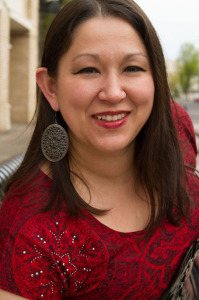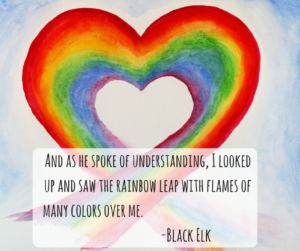
(Warning: there is a terrible pun below. If you are allergic to groaning please enjoy this cartoon instead. http://youtu.be/ykwqXuMPsoc)
When I decided that I wanted to be a writer when I grew up I started collecting writing advice. Not tidbits from websites or manuals written by literati who wouldn’t touch a genre novel with a ten-foot pole. I went to my favorite authors, batted my puppy dog eyes, and said, “Please sir, I’d like some more.”
All right, I didn’t have to be that persuasive. Good thing too. I was so nervous I looked like Shaggy on espresso. Anyway”¦
One of the pieces of advice I received most often was “don’t give up” or some variation thereof. At that point in time I was still pretty naive. I had yet to complete my first story, I didn’t know about the caprices of the market, or the sting of rejection. What I did know what that this was the only career I truly wanted and there was no way I would ever consider quitting.
Oh, the schadenfreude when life proves me wrong.
What I failed to understand was that sooner or later we all have that moment. There’s no magical egg timer ticking away, warning us that it’s coming. No, like a regretful ex it rings when you least expect it and fills your life with woe.
Woe, man.
(Sorry. I couldn’t resist.)
Just like the timing, the cause is different too. It could be the daily grind, the solitude, the rejection, the one star reviews, publisher hijinks, internet trolls, etc. Whatever it may be it brings us so low that the easy 9 ““ 5 looks really appealing.
For some people it happens before the completion of that first trunk novel. For others it’s during a yearlong drought after a series of pro sales. Maybe it comes when that self-published book doesn’t do as well as you wanted. It may come in twenty years when arthritic hands insist that retirement is a good idea.
Whenever it happens the choice is the same. Tough it out or pack it in. It’s never an easy decision. But you know what? There are so many options now. Hands aren’t able to type anymore? Get voice recognition software. Self-published book not doing well? Time to try a different promotion tactic. Feeling lonely? Get some writer friends to join you in a G+ hangout or on face time. Rejection slips piling up? Use them to make lewd origami.
There are so many options, and resources for writers now there really isn’t a good reason to quit. Everything from support groups to indie publishing forums is a click away. It’s awesome!
Yes, being a writer can be hard. Publishing can twist your brain into knots faster than a Mensa puzzle. But it’s also one of the most fun, and exciting fields I know. What other occupation allows you research bomb construction techniques without fear of arrest? This is the best job around! It would be a shame to miss any of it.
If you want to know what Kim may be doing next, check out her blog: http://ninjakeyboard.blogspot.com.
Want to write your own guest post? Here’s the guidelines.
#sfwapro
Enjoy this writing advice and want more content like it? Check out the classes Cat gives via the Rambo Academy for Wayward Writers, which offers both on-demand and live online writing classes for fantasy and science fiction writers from Cat and other authors, including Ann Leckie, Seanan McGuire, Fran Wilde and other talents! All classes include three free slots.







 Treading the waters of diversity is tricky because we never want to disrespect the struggles that women, people of color, the LGBTQ community, or others have had to endure. As writers, we often want to include people like this in our stories because their stories are powerful and can make a difference. This sometimes manifests itself as ‘the gay friend’ or ‘the black friend’ or if you’re really batting for a home run ‘the gay black friend’. This character is great for diversity. He shows that those people exist and that we shouldn’t be afraid of them. But over time, if we see the gay black friend over and over it creates a subliminal message that all gay black men behave a certain way, and that can damage the community. I think we should allow those characters to break the mold and keep it to themselves.
Treading the waters of diversity is tricky because we never want to disrespect the struggles that women, people of color, the LGBTQ community, or others have had to endure. As writers, we often want to include people like this in our stories because their stories are powerful and can make a difference. This sometimes manifests itself as ‘the gay friend’ or ‘the black friend’ or if you’re really batting for a home run ‘the gay black friend’. This character is great for diversity. He shows that those people exist and that we shouldn’t be afraid of them. But over time, if we see the gay black friend over and over it creates a subliminal message that all gay black men behave a certain way, and that can damage the community. I think we should allow those characters to break the mold and keep it to themselves.




One Response
Cat Rambo: Guest Post from Kim Mainord: Mileage May Vary http://t.co/QLDNL67Oas